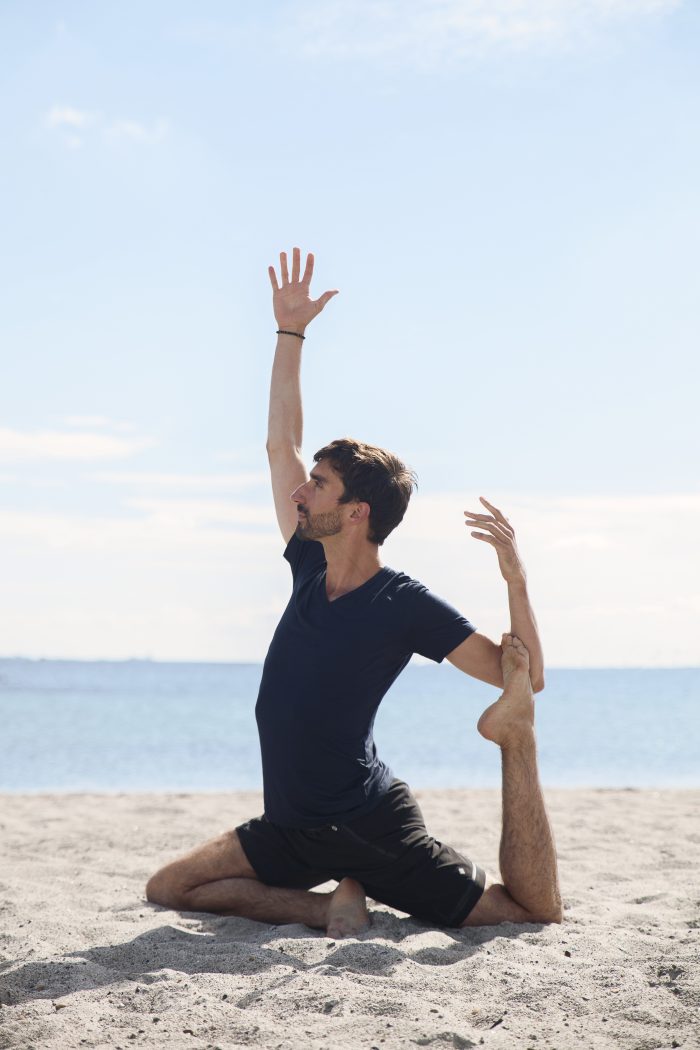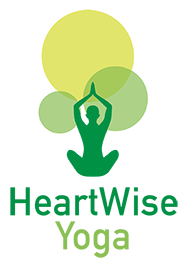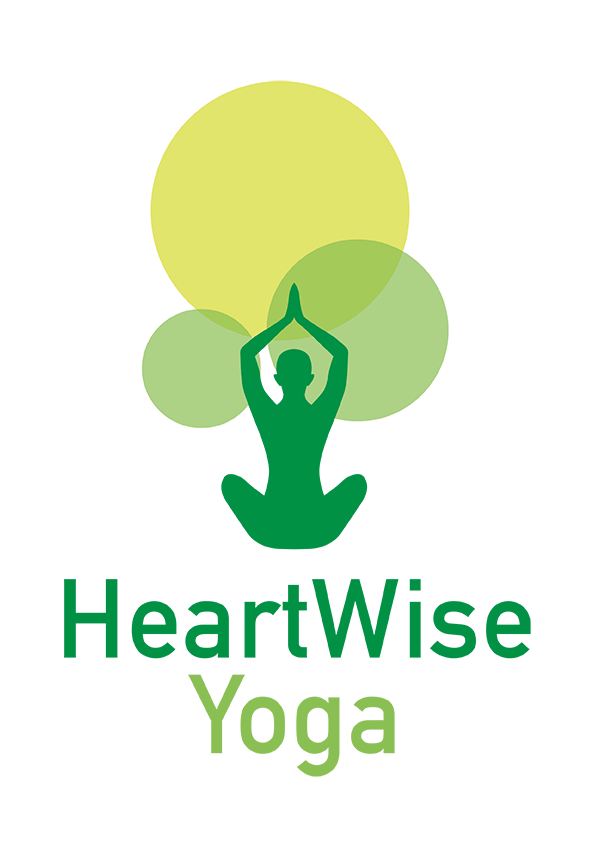The word Yoga comes from Sanskrit and means “union” or “yoke”: the gathering of body, mind and spirit; a practice that seeks to bring balance and harmony by reunifying Self and the World. What most people associate with yoga is its physical aspect:poses or Asanas. But yoga is so much more than what we can do on the mat. This being said, Asanas are often plenty to bring balance, well-being and even the physical and mental strength that we need to cultivate in our life.
My intention with this post is to share some of my knowledge about and experience with yoga. My hope is to inform and inspire you to start or develop a supporting yoga practice. I am convinced that yoga can serve you right where you are today: whether by bringing a new, fulfilling life philosophy, helping you recover from an injury or stress or healing lower-back pain.
How to start a yoga (“Asana”) practice:
If you are new and curious about yoga, I strongly recommend that you start by reflecting a little bit about how you would like yoga to serve you. Are you looking for relaxation, balance, strength, flexibility, a boost of energy or to recover from a specific injury? Although yoga can probably give you all that, it might be valuable to go to the right style or method – the choice is larger than you think! – and ultimately the right teacher(s) – to fulfill your desires. Nonetheless, you may first have to overcome some of the limitations that stand (unconsciously) in your way.
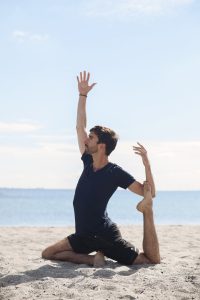
Seeing beyond your own limitations
Many think that one needs to be flexible, super healthy, or a woman (!) to practice yoga. Nope. EVERYONE CAN DO YOGA.
Indeed, yoga adapts to each yogi/yogini and not the other way around. Every good and respectable teacher will tell you that. So the “I played football for 12 years and my hamstrings are too stiff”, the “I do not have the patience”, “I am not thin enough” or even the “I’m hyper flexible” may be true, but they are all limitations you are putting on yourself and not missing prerequisites for yoga. One first yoga teachings I remember is to let go of comparing myself to others (especially the more advanced, good-looking yogis) – symbolized by the Maiya Mala, one of the three “veils” that cover our true nature (read more, for instance,at Radical Self-Esteem). This learning is a journey that starts right there.
For some of us, our initial intentions may be too ambitious and not realistic. Be honest and make it easy for yourself. Try a nearby studio first, start with shorter classes, go to classes offered at convenient hours or perhaps the classes taught at your work. Maybe one of your friends already goes to yoga and you could tag along one day.
Finally, be open and flexible. Try a studio, a teacher and see if it works for you. Is the flow too intense or the level too advanced? Does the teacher acknowledge you and correct you when needed? Do you feel better, neutral or worse after the class? Assess and adjust. Try other studios, other teachers, other methods.
Finding your preferred yoga style and/or teacher
Finding the right teacher and, especially, the right type of yoga is crucial. As for many things, there are plenty of more or less talented teachers, but most importantly there might be just a few teachers who are well-suited for your needs right now. Here is a quick overview of the most used and common yoga methods in the Western world. My intention is barely to give you an overview, and each teacher will certainly adapts and offer his/her own style.Usually, there are 1 or 2 (sometimes 3) levels offered.
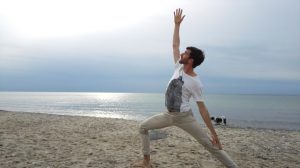
Hatha: The most common and largest approach. More or less all forms of asana practice in the west can go under the umbrella of Hatha yoga. “Hatha” means “forceful” and explicitly refers to the physical practice of yoga (i.e. Asanas). Mmm… So if you just see “Hatha” as the title of the class, I recommend that you talk to the teacher or the studio to explain your goals and require more information (on the class’ rhythm, the level, etc.).
Ashaya yoga: My favorite yoga style, and the one in which I am training to become certified! Ashaya was recently founded by former Anusara trainer, Todd Norian (Ashaya Yoga). Ashaya is expanding, slowly beyond its East coast native land. Ashaya has a strong focus on body alignment and healing, including therapeutic techniques for injuries, as well as meditation and pranayama. Its underlying philosophy is non-dual Trantra (Kashmir Shavaism). In addition, the whole technique evolves around the five elements: sky, earth, water, fire, and air, which you all connect to in each pose. Todd teaches retreats and workshops at Esalen in Big Sur, CA, in Canada and mainly on the US East coast, and leads teacher trainings different places in the US.
Anusara: I fell in love with yoga through Anusara yoga, and this is the type I am most familiar with. In 2012, Anusara went through a whole restructuring which then gave birth to Anusara Hatha School of Yoga (ASHA). Anusara is big on alignment, muscular activity, includes flow but does not only rely on that, and the teacher usually creatively builds up their class around a broader theme. Each class then unfolds beyond Asanas with additional benefits that carry off the mat. Another great strength of Anusara is the strong focus on the “kula”, the community, which can make the atmosphere warm and inclusive. Because of its recent restructuring, this method is less widespread as it used to. Check their webpage to find studios and teachers.
Iyengar: A form of yoga which is strong on body alignment, and usually gentle in terms of cardio. My experience with Iyengar teachers is that they often are very skilled and very attentive to their students thanks to the very long and detailed training they undergo. Although the pace may vary, it is usually not a “flow” (a series or sequences of poses) and maybe not the type for you if you are looking for sweat on your forehead. Iyengar: the official website for this tradition.
Ashtanga: This is a series-based form of yoga and one of the oldest yoga traditions. Even at a beginner level, the pace might be quite sustained, easily rising the body and room temperature! Usually, students go through part of the full Ashtanga series during a class, each pose being guided by the breath. If you are a beginner, make sure to ask the teacher to adjust and correct you, as the right alignment is as – if not more – important as getting in the right pose at the right time. More at: Ashtanga
Vinyasa: This is a general term to designate a class with a continuous, often sustained, flow of poses in line with the breath. Such classes can be very powerful in terms of energy boosting and quite physical – depending on the level and teacher.
Bikram and other Hot Yoga forms: I am not a big fan of highly heated rooms, but if you are, Bikram or another form of “Hot Yoga” might be ideal. I haven’t tried myself, but I often heard from friends “it’s either you hate it or love it.” The heat (85-105 F or app. 35 C) helps increase flexibility and leaves you feel well “rinsed inside” (quoting my friend Kei) after the class. Bikram classes always consist of the same 26 poses taught with the same instructions, and is not focused on alignment and direct philosophies as other yoga forms. Therefore, if you are looking for a good work out and more flexibility, Bikram might become your thing. If not, and/or have an injury you need to pay attention to, my advice is to try something else.
Restorative: A category of classes, mainly based on Iyengar techniques. The goal is to relax and rejuvenate. You are not using your muscles at all and use many props to stay in poses for 5 min or so and let tensions fully release. I recommend it for everyone, at least once a week. Restoratives are so refreshing and nourishing in the long run (Don’t plan to run a marathon just after it).
Yoga Nidra: or yoga of sleep. The goal is not to fall asleep but to relax completely. It is said that 30 min of yoga Nidra are as rejuvenating as 4 hours of sleep. I love it, especially when paired with crystal bowls sounds (Check Loriel Starr, amazing teacher and sound healer in SF Bay area for classes and workshops). This website offers free classes.
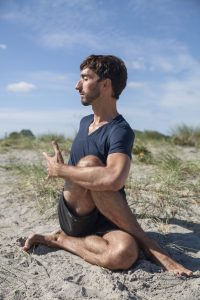
I cannot underline enough the importance of starting with a teacher as opposed to on your own with a streaming video or a book. That will save you from potentially harmful misalignment and you will get much better results. I know some people who started with a home practice streaming videos and had trouble keeping up a regular practice (for instance, once the program is over). You may even injure a wrist or a knee by doing some poses incorrectly. If anything, yoga is here to heal and not to harm. However, a home practice is often a natural and appropriate expansion of our in-class practice.
More ressources:
www.yogaglo.com: if you need inspiration or support for a home practice, this affordable website has hundreds of classes from highly respected and great teachers. Very convenient, you can select the time, level, and main focus of your class. Meditation and dharma teachings are available too.
yogavibes: another streaming website for yoga videos.
Yoga Journal: an go-to databases for articles, posts, and discussions about Yoga in general.
My favorite teachers:
on Yogaglo: March Holzman, Elena Brower, Tara Judelle, Amy Ippoliti, Darren Rhodes.
Todd Norian, all over the US (mainly workshops, trainings and retreats).
In Copenhagen: Come to one of my classes (see my schedule) and check Pakhus Yoga, Up Dog Yoga, Hamsa Studio, and Tinkuy.
In Paris: Anne Vandewalle.
In San Francisco: Loriel Starr, Alex Rossi. Studios: Yoga Tree, Bend Yoga…
If you are in Copenhagen, reach out and say hi!!
cedric@heartwiseyoga.com
Namste
Cédric
